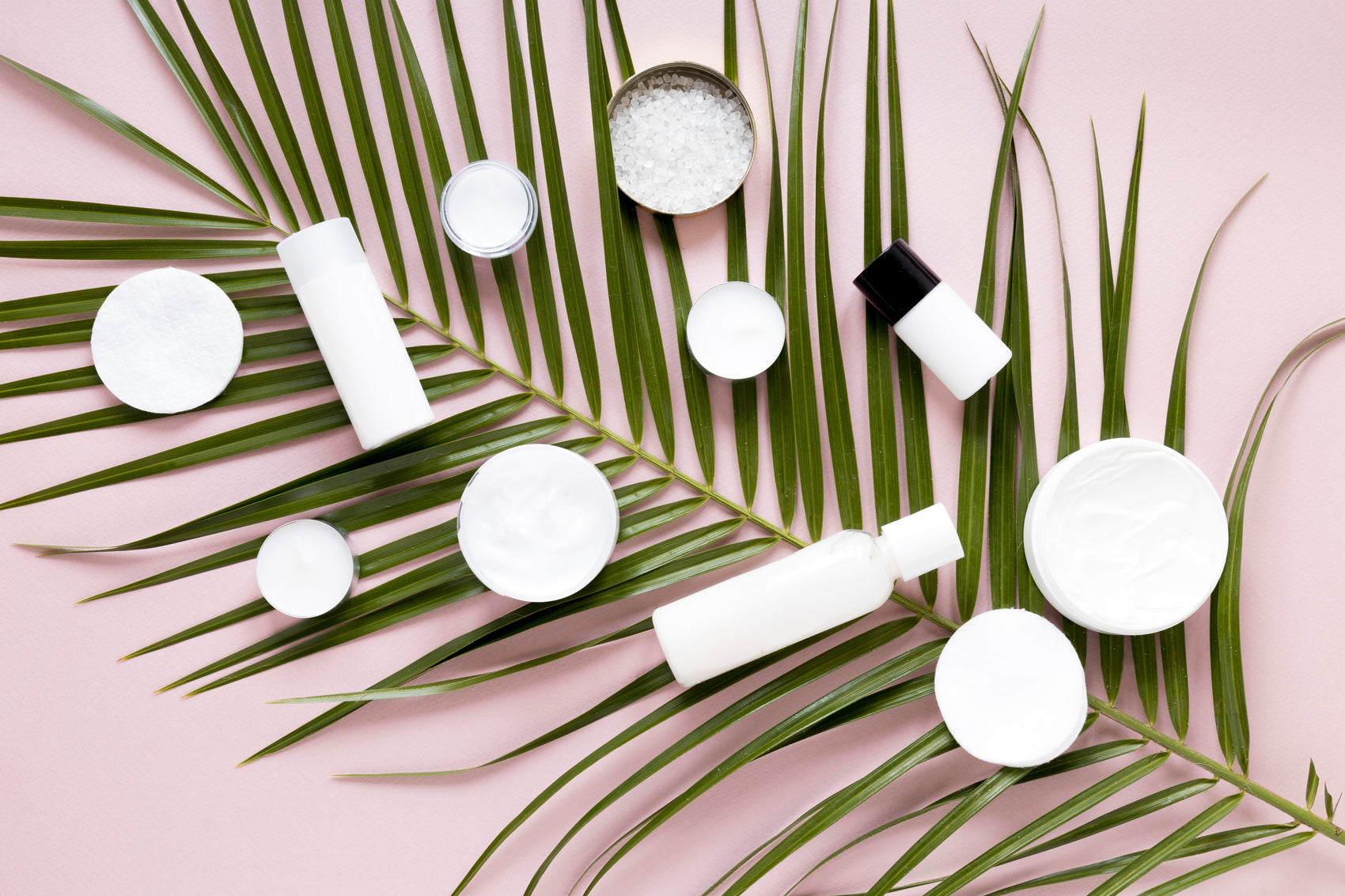Table of Contents
Introduction
Have you ever found yourself overwhelmed by the sheer number of ingredients in skincare products? If so, you’re not alone. The skincare world is filled with buzzwords and trends, making it challenging to discern which ingredients are genuinely beneficial. One ingredient that has gained significant attention and praise is niacinamide, also known as vitamin B3.
Niacinamide has become a skincare favorite for good reason. It boasts a multitude of benefits, from reducing the appearance of pores to improving skin tone and texture. For beginners, however, incorporating niacinamide into your routine can seem daunting. We understand that navigating the world of serums can be confusing, especially when you're just starting.
In this blog post, we’ll explore everything you need to know about niacinamide serum. We’ll discuss its benefits, how to apply it effectively, and how to seamlessly integrate it into your skincare routine. By the end, you’ll feel empowered to harness the power of niacinamide for your skin.
Let’s dive in and discover how to use niacinamide serum for beginners!
What is Niacinamide?
Niacinamide is a water-soluble vitamin that plays a vital role in maintaining healthy skin. Its versatility makes it suitable for various skin types, and it can address multiple concerns, including:
- Minimizing pores: By regulating sebum production, niacinamide can help reduce the appearance of enlarged pores.
- Reducing redness and inflammation: Its anti-inflammatory properties make it an excellent choice for those with sensitive skin or conditions like rosacea.
- Improving skin texture and tone: Niacinamide can help even out skin tone and promote a brighter complexion.
- Strengthening the skin barrier: By enhancing the skin's barrier function, it helps retain moisture and protect against environmental damage.
These benefits make niacinamide a powerhouse ingredient that can significantly enhance your skincare routine.
Choosing the Right Niacinamide Serum
When selecting a niacinamide serum, consider the following factors:
- Concentration: Niacinamide serums typically range from 2% to 10% concentration. For beginners, starting with a lower concentration (around 5%) is advisable. This allows your skin to adjust before potentially moving to a higher concentration.
- Additional Ingredients: Some niacinamide serums are formulated with other beneficial ingredients, such as hyaluronic acid for hydration or zinc for oil control. Choosing a serum that addresses your specific skin concerns can amplify the benefits.
- Skin Type: If you have sensitive skin, look for a fragrance-free and gentle formulation. If your skin is oily or acne-prone, consider a serum that combines niacinamide with salicylic acid for added benefits.
At Moon and Skin, we believe in providing clean and thoughtful skincare for every phase of life. Our Stem Cell C Serum can be paired with niacinamide to enhance its brightening effects while maintaining skin health.
How to Incorporate Niacinamide Serum into Your Skincare Routine
Step 1: Cleanse
Start by cleansing your face to remove any dirt, oil, or makeup. A clean slate is crucial for maximizing the effectiveness of the products you apply afterward. We recommend using a gentle cleanser like our Superfood Cleanser to nourish your skin while cleansing.
Step 2: Tone (Optional)
If you use a toner in your routine, apply it after cleansing. Toners can help balance your skin's pH and prepare it for the following steps.
Step 3: Apply Niacinamide Serum
- Dispense: Use the dropper to dispense a few drops of niacinamide serum onto your fingertips.
- Apply: Gently massage the serum into your skin, focusing on areas of concern. It's essential to cover your entire face for even benefits.
- Amount: Start with a pea-sized amount of serum. If your skin tolerates it well, you can gradually increase the amount as needed.
Step 4: Moisturize
After applying niacinamide, seal in its benefits with a hydrating moisturizer. Our Hyaluronic Brightening Moisturizer is an excellent choice, as it complements the hydrating properties of niacinamide while providing additional brightening benefits.
Step 5: Sun Protection (Morning Routine)
If you're applying niacinamide in the morning, always finish with a broad-spectrum sunscreen. This step is critical to protect your skin from UV damage while enhancing the protective benefits of niacinamide.
Summary of Key Takeaways
- Start with a gentle cleanser to prepare your skin.
- Consider using a toner to balance your skin's pH.
- Apply a pea-sized amount of niacinamide serum and gently massage it into your skin.
- Follow up with a moisturizer to lock in hydration.
- Always apply sunscreen in the morning.
When to Use Niacinamide Serum
Niacinamide is versatile and can be used both in the morning and evening. Here’s how you can structure your routine:
- Morning: Use niacinamide serum after cleansing and toning, followed by a moisturizer and sunscreen. This protects your skin while enhancing its natural barrier function.
- Evening: Apply niacinamide serum after cleansing and toning, and follow it up with a nourishing moisturizer. This allows niacinamide to work overnight, promoting skin repair and regeneration.
Combining Niacinamide with Other Ingredients
One of the great things about niacinamide is its compatibility with a variety of other active ingredients. Here’s how to layer niacinamide with some popular skincare components:
Niacinamide and Hyaluronic Acid
Both niacinamide and hyaluronic acid are excellent for hydration. Here’s how to use them together:
- Apply hyaluronic acid first: As a humectant, hyaluronic acid draws moisture into the skin.
- Follow up with niacinamide: This helps lock in the hydration while providing its additional benefits.
This combination will leave your skin feeling plump and hydrated.
Niacinamide and Salicylic Acid
For those with oily or acne-prone skin, combining niacinamide with salicylic acid can be beneficial. However, it’s essential to use them correctly:
- Use salicylic acid in the evening: Apply it first and then follow up with a moisturizer.
- Use niacinamide either in the morning or on alternate nights: This strategy allows both ingredients to work effectively without irritation.
Niacinamide and Retinol
Retinol is a powerful anti-aging ingredient, and it can be combined with niacinamide for enhanced benefits:
- Apply niacinamide first in your routine: This can help reduce the irritation that some people experience with retinol.
- Use retinol on alternate nights: This approach allows your skin to adjust to both ingredients without becoming overwhelmed.
While both niacinamide and retinol can be drying, using a good moisturizer afterward is crucial to maintain hydration.
Niacinamide and Vitamin C
There has been some debate about using niacinamide and vitamin C together. However, research has indicated that they can be safely used together:
- Use vitamin C in the morning: Its antioxidant properties help protect against free radicals.
- Apply niacinamide in the evening: This allows both ingredients to work effectively without compromising each other’s benefits.
Common Concerns and Misconceptions
As beginners start using niacinamide serum, several questions and concerns may arise. Let’s address some of them:
Can Sensitive Skin Use Niacinamide?
Yes, niacinamide is generally well-tolerated by most skin types, including sensitive skin. Its anti-inflammatory properties make it an excellent choice for those prone to irritation. However, it’s always good to perform a patch test before incorporating any new product into your routine.
How Much Niacinamide Should I Use?
Starting with a pea-sized amount is recommended. Gradually increase as your skin adapts, but avoid using excessive amounts, as this could lead to irritation.
Should I Store Niacinamide Serum in the Refrigerator?
While it’s not necessary, storing niacinamide serum in the refrigerator can help prolong its shelf life, especially if it contains other sensitive ingredients.
How Long Does It Take to See Results?
With consistent use, many people start noticing improvements in their skin within 4-8 weeks. However, results may vary depending on individual skin types and concerns.
Conclusion
Incorporating niacinamide serum into your skincare routine can be a transformative step for your skin. Its numerous benefits, including minimizing pores, reducing redness, and improving overall skin texture, make it a must-have for beginners and seasoned skincare enthusiasts alike.
At Moon and Skin, we are passionate about empowering you to achieve your best skin. We invite you to explore our Bundle & Save collection for a holistic approach to skincare that includes our core products, which work synergistically with niacinamide for optimal results.
As you embark on your journey with niacinamide, remember that consistency is key. With regular use and the right combination of products, you can achieve the radiant, healthy skin you deserve. Don’t hesitate to reach out to our community for support and guidance as you explore the world of skincare.
FAQ
1. Can I use niacinamide serum every day?
Yes, niacinamide can be used daily, both in the morning and evening.
2. What skin types can benefit from niacinamide?
Niacinamide is suitable for all skin types, including oily, dry, sensitive, and combination skin.
3. Is it safe to mix niacinamide with other active ingredients?
Yes, niacinamide is compatible with many active ingredients. However, avoid combining it with highly acidic products without proper knowledge.
4. How do I know which niacinamide serum to choose?
Look for a serum that matches your skin concerns, has an appropriate concentration, and is formulated with complementary ingredients.
5. Can niacinamide help with acne?
Yes, niacinamide can help regulate oil production, reduce inflammation, and improve the appearance of acne scars, making it beneficial for acne-prone skin.
Feel free to explore our Best Sellers collection for highly-rated products that can enhance your skincare routine!







